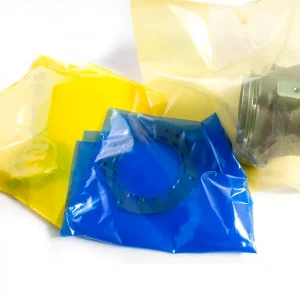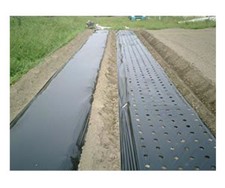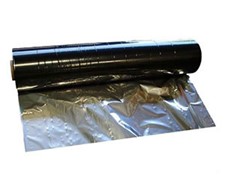In Libby’s Check Tube, Radiocarbon Courting Understood
- pragati
- May 28, 2023
- Dating Chat
- 0 Comments
therefore doesn’t deflect incoming cosmic rays.
B Exemplified radiocarbon information from the Mendeleev, Lomonosov Ridge and Morris Yesup Rise (see additionally Supplementary Fig. 1). See the almost linear age development downcore of PI_2 specimens and the distinct age bounce of PI_3 specimen and published information in glacial sediments. Radiocarbon (14C) dating on calcareous foraminifera4,5,6,7,8,9 supplies probably the most trustworthy and stringent chronology for such ground-truthing within the last 45 ka. The site of Velika Humska Čuka is, with Bubanj, the eponymous site of the Bubanj-Hum tradition (Garašanin M. Reference Garašanin1958a). It is situated on the highest of a hill on the edge of the Niš plain, about eight km northeast from Niš in southeastern Serbia.
Archaeological views: carbon 14—the solution to dating david and solomon?
By comparing the relative amounts of fluorine composition of skeletal stays, one can determine whether or not the remains have been buried on the identical time. A bone with the next fluorine composition has been buried for an extended time period. Absolute relationship is the time period used to describe any courting technique that tells how previous a specimen is in years. These are generally analytical methods, and are carried out in a laboratory. Absolute dates are additionally relative dates, in that they tell which specimens are older or younger than others.
Radiocarbon (carbon 14) is an isotope of the component carbon that’s unstable and weakly radioactive. By using wood samples from bushes as soon as buried under glacial ice, Libby proved that the last ice sheet in northern North America receded 10,000 to 12,000 years in the past, not 25,000 years as geologists had previously estimated. At the time, no radiation-detecting instrument (such as a Geiger counter) was delicate enough to detect the small quantity of carbon-14 that Libby’s experiments required.
Associated references
This methodology relies on the assumption (which practically at all times holds true) that deeper layers of rock were deposited earlier in Earth’s historical past, and thus are older than extra shallow layers. The successive layers of rock characterize successive intervals of time. Archaeologists use many various strategies to determine the age of an object. Usually, several different methods are utilized to the same object. Relative dating arranges artifacts in a chronological sequence from oldest to most recent irrespective of the actual date.
During photosynthesis, crops discriminate in opposition to the heavier isotopes of carbon, taking up proportionally less C-13 and C-14 than is on the market of their carbon reservoir. The result is isotopic fractionation, and it’s handed alongside to the shoppers of the plants (the herbivores) and to their consumers (the carnivores). In fact, extra fractionation happens when herbivores eat the crops and when carnivores eat the herbivores. It is believed that all organisms discriminate towards C-14 about twice as much as towards C-13, and the ratio between the steady C-12 and C-13 atoms can be used to correct for the preliminary depletion of C-14. Radiocarbon dates could be corrected for isotopic fractionation, a correction called normalization. The amount of isotopic fractionation is dependent upon the photosynthetic pathway utilized by the plant.
Archaeological courting methods
Our world is continually balancing the amounts of carbon within the atmosphere, the oceans, and the soil, and this stability doesn’t discriminate between carbon-12 and Say hi app carbon-14, they mix homogeneously. Fortunately, we have data relating to sudden changes in carbon-14 ranges and the atmosphere’s response to these sudden modifications. There was a sudden injection of carbon 14 within the Nineteen Fifties and Sixties in the course of the atomic bomb checks, and these tests may help us perceive the consequences of sudden modifications to carbon 14/12 ranges. The nuclear testing caused the carbon 14 values to skyrocket within the atmosphere whereas the carbon 12 remained the same; carbon-14 ranges doubled from the pre-atomic-testing values (Reference 1). Equilibrium was reached quickly because of the carbon-14 absorption within the land and sea. This atomic testing carbon-14 “spike” is depicted in Figures 1 and a pair of.
It is a incontrovertible fact that new oceanic crust regularly varieties on the mid-oceanic ridges and spreads away from these ridges in opposite directions. When lava at the ridges hardens, it keeps a hint of the magnetism of the earth’s magnetic area. Therefore, each time the magnetic subject reverses itself, bands of paleomagnetism of reversed polarity present up on the ocean floor alternated with bands of regular polarity.
Part 1: relative and radiocarbon dating
Artifact types similar to pottery types are seriated by analyzing their abundances through time. This is done by counting the variety of pieces of each type of the artifact in each stratigraphic layer and then graphing the information. A layer with many pieces of a particular fashion will be represented by a wide band on the graph, and a layer with just a few pieces might be represented by a slim band. The bands are arranged into battleship-shaped curves, with every type getting its own curve .
Creationist and evolutionary geologists agree that diamonds are shaped greater than 100 miles (160 km) down, deep within the earth’s higher mantle, and don’t include organic carbon from dwelling issues. Explosive volcanoes brought them to the earth’s floor very rapidly in “pipes.” As the hardest known natural substance, these diamonds are extraordinarily proof against chemical corrosion and external contamination. Also, the tight bonding of their crystals would have prevented any carbon-14 within the ambiance from replacing any common carbon atoms in the diamonds. Distribution of 14C values in samples of natural carbon from biologically derived materials such as fossils, limestones, coals, oils, pure gas, and graphite, as reported in the scientific literature. All these samples are imagined to be hundreds of thousands of years old and may include no detectable radiocarbon, based on the usual geological time scale. Radiocarbon (14C or carbon-14) atoms combine with oxygen atoms within the environment to form carbon dioxide (CO2) that circulates into the biosphere.




